Bushranger
This articleneeds additional citations forverification.(September 2023) |

Bushrangerswere armed robbers who hid from authorities inthe bushof the British colonies in Australia. The earliest use of the term applied to escapedconvictsin the early years of theBritish settlements in Australia.By the 1820s, the term had evolved to refer to those who took up "robbery under arms"as a way of life, using bases in the bush.
Bushranging thrived during thegold rushyears of the 1850s and 1860s when the likes ofBen Hall,Bluecap,andCaptain Thunderboltroamed the country districts ofNew South Wales.These "Wild Colonial Boys",mostly Australian-born sons of convicts, were roughly analogous to British"highwaymen"and outlaws of theAmerican Old West,and their crimes typically included robbing small-town banks and coach services. In certain cases, such as that ofDan Morgan,theClarke brothers,and Australia's best-known bushranger,Ned Kelly,numerous policemen were murdered. The number of bushrangers declined due to better policing and improvements in rail transport and communication technology, such astelegraphy.Although bushrangers appeared sporadically into the early 20th century, most historians regard Kelly's capture and execution in 1880 as effectively representing the end of the bushranging era.
Bushranging exerted a powerful influence in Australia, lasting for over a century and predominating in the eastern colonies. Its origins in a convict system bred a unique kind of desperado, most frequently with an Irish political background. Native-born bushrangers also expressed nascentAustralian nationalistviews and are recognised as "the first distinctively Australian characters to gain general recognition."[2]As such, a number of bushrangers becamefolk heroesand symbols of rebellion against the authorities, admired for their bravery, rough chivalry and colourful personalities. However, in stark contrast to romantic portrayals in the arts and popular culture, bushrangers tended to lead lives that were "nasty, brutish and short", with some earning notoriety for their cruelty and bloodthirst. Australian attitudes toward bushrangers remain complex and ambivalent.
Etymology[edit]
The earliest documented use of the term appears in a February 1805 issue ofThe Sydney Gazette,which reports that a cart had been stopped between Sydney andHawkesburyby three men "whose appearance sanctioned the suspicion of their being bush-rangers".[3]John Biggedescribed bushranging in 1821 as "absconding in the woods and living upon plunder and the robbery of orchards."Charles Darwinlikewise recorded in 1835 that a bushranger was "an open villain who subsists by highway robbery, and will sooner be killed than taken alive".[4]
History[edit]
Over 2,000 bushrangers are estimated to have roamed the Australian countryside, beginning with the convict bolters and drawing to a close afterNed Kelly's last stand atGlenrowan.[5]
Convict era (1780s–1840s)[edit]

Bushranging began soon after British settlement with the establishment ofNew South Walesas apenal colonyin 1788. The majority of early bushrangers were convicts who had escaped prison, or from the properties of landowners to whom they had been assigned as servants. These bushrangers, also known as "bolters", preferred the hazards of wild, unexplored bushland surroundingSydneyto the deprivation and brutality of convict life. The first notable bushranger, African convictJohn Caesar,robbed settlers for food, and had a brief, tempestuous alliance with Aboriginal resistance fighters duringPemulwuy's War[broken anchor].While other bushrangers would go on to fight alongsideIndigenous Australiansinfrontier conflictswith the colonial authorities, theGovernmenttried to bring an end to any such collaboration by rewarding Aborigines for returning convicts to custody.Aboriginal trackerswould play a significant role in the hunt for bushrangers.
ColonelGodfrey Mundydescribed convict bushrangers as "desperate, hopeless, fearless; rendered so, perhaps, by the tyranny of a gaoler, of an overseer, or of a master to whom he has been assigned."Edward Smith Hall,editor of early Sydney newspaperThe Monitor,agreed that the convict system was a breeding-ground for bushrangers due to its savagery, with starvation and acts of torture being rampant. "Liberty or Death!" was the cry of convict bushrangers, and in large numbers they roamed beyond Sydney, some hoping to reachChina,which was commonly believed to be connected by an overland route. Some bolters seized boats and set sail for foreign lands, but most were hunted down and brought back to Australia. Others attempted to inspire an overhaul of the convict system, or simply sought revenge on their captors. This latter desire found expression in the convict ballad "Jim Jones at Botany Bay",in which Jones, the narrator, plans to join bushrangerJack Donahueand "gun the floggers down".
Donahue was the most notorious of the early New South Wales bushrangers, terrorising settlements outside Sydney from 1827 until he was fatally shot by a trooper in 1830.[3]That same year, west of theBlue Mountains,convictRalph Entwistlesparked a bushranging insurgency known as theBathurst Rebellion.He and his gang raided farms, liberating assigned convicts by force in the process, and within a month, his personal army numbered 80 men. Following gun battles with vigilante posses, mounted policemen and soldiers of the39thand57th Regiment of Foot,he and nine of his men were captured and executed.

Convict bushrangers were particularly prevalent in the penal colony ofVan Diemen's Land(now the state ofTasmania), established in 1803.[3]The island's most powerful bushranger, the self-styled "Lieutenant Governor of the Woods",Michael Howe,led a gang of up to one hundred members "in what amounted to a civil war" with the colonial government.[6]His control over large swathes of the island prompted elitesquattersfromHobartandLauncestonto collude with him, and for six months in 1815,Lieutenant-GovernorThomas Davey,fearing a convict uprising, declaredmartial lawin an effort to suppress Howe's influence. Most of the gang had either been captured or killed by 1818, the year Howe was clubbed to death by a soldier.[6]Vandemonian bushranging peaked in the 1820s with hundreds of bolters at large, among the most notorious beingMatthew Brady's gang, cannibal serial killersAlexander PearceandThomas Jeffrey,and tracker-turned-resistance leaderMusquito.Jackey Jackey(alias of William Westwood) was sent from New South Wales to Van Diemen's Land in 1842 after attempting to escapeCockatoo Island.In 1843, he escapedPort Arthur,and took up bushranging in Tasmania's mountains, but was recaptured and sent toNorfolk Island,where, as leader of the 1846Cooking Pot Uprising,he murdered three constables, and was hanged along with sixteen of his men.
The era of convict bushrangers gradually faded with the decline in penal transportations to Australia in the 1840s. It had ceased by the 1850s to all colonies exceptWestern Australia,which accepted convicts between 1850 and 1868. The best-known convict bushranger of the colony was the prolific escapeeMoondyne Joe.
Gold rush era (1850s–1860s)[edit]

The bushrangers' heyday was theGold Rushyears of the 1850s and 1860s as the discovery of gold gave bushrangers access to great wealth that was portable and easily converted to cash. Their task was assisted by the isolated location of the goldfields and a police force decimated by troopers abandoning their duties to join the gold rush.[5]
George Melville was hanged in front of a large crowd for robbing the McIvor gold escort nearCastlemainein 1853.[5]
Bushranging numbers flourished inNew South Waleswith the rise of the colonial-born sons of poor, often ex-convict squatters who were drawn to a more glamorous life than mining or farming.[5]
Much of the activity in this era was in theLachlan Valley,aroundForbes,YassandCowra.[5]

TheGardiner–Hall gang,led byFrank GardinerandBen Halland countingJohn Dunn,John GilbertandFred Lowryamong its members, was responsible for some of the most daring robberies of the 1860s, including the1862 Escort Rock robbery,Australia's largest ever gold heist. The gang also engaged in many shootouts with the police, resulting in deaths on both sides. Other bushrangers active in New South Wales during this period, such asDan Morgan,[5]and theClarke brothersand their associates, murdered multiple policemen.[7]
As bushranging continued to escalate in the 1860s, theParliament of New South Walespassed a bill, theFelons Apprehension Act 1865,that effectively allowed anyone to shoot outlawed bushrangers on sight.[8]By the time that the Clarke brothers were captured and hanged in 1867, organised gang bushranging in New South Wales had effectively ceased.
Captain Thunderbolt(alias of Frederick Ward) robbed inns and mail-coaches across northern New South Wales for six and a half years, one of the longest careers of any bushranger.[3]He sometimes operated alone; at other times, he led gangs, and was accompanied by his Aboriginal 'wife',Mary Ann Bugg,who is credited with helping extend his career.[3]
Decline and the Kelly gang (1870s–1880s)[edit]

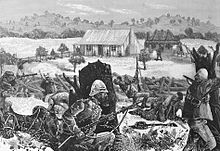
The increasing push of settlement, increased police efficiency, improvements inrail transportand communications technology, such astelegraphy,made it more difficult for bushrangers to evade capture. In 1870, Captain Thunderbolt was fatally shot by a policeman, and with his death, the New South Wales bushranging epidemic that began in the early 1860s came to an end.[9]
The scholarly, but eccentricCaptain Moonlite(alias of Andrew George Scott) worked as an Anglicanlay readerbefore turning to bushranging. Imprisoned inBallaratfor an armed bank robbery on the Victorian goldfields, he escaped, but was soon recaptured and received a ten-year sentence inHM Prison Pentridge.Within a year of his release in 1879, he and his gang held up the town ofWantabadgeryin theRiverina.Two of the gang (including Moonlite's "soulmate" and alleged lover, James Nesbitt) and one trooper were killed when the police attacked. Scott was found guilty of murder and hanged along with one of his accomplices on 20 January 1880.[10]
Among the last bushrangers was the Kelly gang in Victoria, led byNed Kelly,Australia's most famous bushranger. After murdering three policemen in a shootout in 1878, the gang was outlawed, and after raiding towns and robbing banks into 1879, earned the distinction of having the largest reward ever placed on the heads of bushrangers. In 1880, after failing to derail and ambush a police train, the gang, clad inbulletproof armourthey had devised, engaged in a shootout with the police. Ned Kelly, the only gang member to survive, was hanged at theMelbourne Gaolon 11 November 1880.[11]
Isolated outbreaks (1890s–1900s)[edit]
In July 1900, the Governor brothers—a trio group consisting of an Aboriginal fencing contractor namedJimmy Governorand his associates, Joe Governor and Jack Underwood—perpetrated the Breelong Massacre, wounding one and killing five members of the Mawbey family.[12]
The massacre sparked the Governor brothers to engage in a crime spree across northern New South Wales, triggering one of the largestmanhuntsin Australian history, with 2,000 armed civilians and police covering 3,000 km of northern New South Wales in a search for the brothers.[12]The Governor brothers were pursued by authorities for a total of three months, consequently being brought down on 27 October with the arrest of Jimmy Governor by a group of armed locals inBobin, NSW,and the death of his brother, Joe Governor, nearSingleton, NSWa few days later.[13]
Jack Underwood (who had been caught shortly after the Breelong Massacre) was hanged inDubbo Gaolon 14 January 1901, and Jimmy Governor was hanged inDarlinghurst Gaolon 18 January 1901.[13]
"Boy bushrangers" (1910s–1920s)[edit]
The final phase of bushranging was sustained by the so-called "boy bushrangers" —youths who sought to commit crimes, mostly armed robberies, modelled on the exploits of their bushranging "heroes". The majority were captured alive without any fatalities.[14]
Public perception[edit]

In Australia, bushrangers often attract public sympathy (cf. the concept ofsocial bandits). InAustralian historyandiconographybushrangers are held in some esteem in some quarters due to the harshness andanti-Catholicismof the colonial authorities whom they embarrassed, and the romanticism of the lawlessness they represented. Some bushrangers, most notablyNed Kellyin hisJerilderie letter,and in his final raid onGlenrowan,explicitly represented themselves as political rebels. Attitudes to Kelly, by far the most well-known bushranger, exemplify the ambivalent views of Australians regarding bushranging.
Legacy[edit]

The impact of bushrangers upon the areas in which they roamed is evidenced in the names of many geographical features in Australia, includingBrady's Lookout,Moondyne Cave,the township ofCodrington,Mount Tennent,Thunderbolts WayandWard's Mistake.The districts ofNorth East Victoriaare unofficially known as Kelly Country.[15]
Some bushrangers made a mark onAustralian literature.While running from soldiers in 1818, Michael Howe dropped a knapsack containing a self-made book of kangaroo skin and written in kangaroo blood. In it was adream diaryand plans for a settlement he intended to found in the bush.[16]Sometime bushranger Francis MacNamara, also known asFrank the Poet,wrote some of the best-known poems of the convict era. Several convict bushrangers also wrote autobiographies, including Jackey Jackey,Martin CashandOwen Suffolk.
Cultural depictions[edit]

Jack Donahue was the first bushranger to have inspiredbush ballads,including "Bold Jack Donahue" and "The Wild Colonial Boy".[17]Ben Hall and his gang were the subject of several bush ballads, including "Streets of Forbes".
Michael Howe inspired the earliest play set in Tasmania,Michael Howe: The Terror! of Van Diemen's Land,which premiered atThe Old Vicin London in 1821. Other early plays about bushrangers includeDavid Burn'sThe Bushrangers(1829),William Leman Rede'sFaith and Falsehood; or, The Fate of the Bushranger(1830),William Thomas Moncrieff'sVan Diemen's Land: An Operatic Drama(1831),The Bushrangers; or, Norwood Vale(1834) byHenry Melville,andThe Bushrangers; or, The Tregedy of Donohoe(1835) byCharles Harpur.
In the late 19th century,E. W. HornungandHume Nisbetcreated popular bushranger novels within the conventions of the European "noble bandit" tradition. First serialised inThe Sydney Mailin 1882–83,Rolf Boldrewood's bushranging novelRobbery Under Armsis considered a classic of Australian colonial literature. It also cited as an important influence on the American writerOwen Wister's 1902 novelThe Virginian,widely regarded as the firstWestern.[18]
Bushrangers were a favoured subject of colonial artists such asS. T. Gill,Frank P. MahonyandWilliam Strutt.Tom Roberts,one of the leading figures of theHeidelberg School(also known asAustralian Impressionism), depicted bushrangers in some of his history paintings, includingIn a corner on the Macintyre(1894) andBailed Up(1895), both set inInverell,the area where Captain Thunderbolt was once active.
Film[edit]
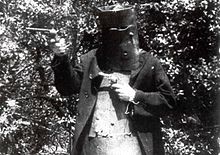
Although not the first Australian film with a bushranging theme,The Story of the Kelly Gang(1906)—the world's firstfeature-lengthnarrative film—is regarded as having set the template for the genre. On the back of the film's success, its producers releasedone of two 1907 film adaptationsof Boldrewood'sRobbery Under Arms(the other beingCharles MacMahon'sversion). Entering the first "golden age" of Australian cinema (1910–12), directorJohn Gavinreleased two fictionalised accounts of real-life bushrangers:Moonlite(1910) andThunderbolt(1910). The genre's popularity with audiences led to a spike of production unprecedented in world cinema.[19]Dan Morgan(1911) is notable for portraying its title character as an insane villain rather than a figure of romance. Ben Hall, Frank Gardiner, Captain Starlight, and numerous other bushrangers also received cinematic treatments at this time.
Alarmed by what they saw as the glorification of outlawry, state governmentsimposed a ban on bushranger filmsin 1912, effectively removing "the entire folklore relating to bushrangers... from the most popular form of cultural expression."[20]It is seen as a major reason for the collapse of a booming Australian film industry.[21]One of the few Australian films to escape the ban before it was lifted in the 1940s is the1920 adaptationofRobbery Under Arms.[19]Also during this lull appeared American takes on the bushranger genre, includingThe Bushranger(1928),Stingaree(1934) andCaptain Fury(1939).
Ned Kelly(1970) starredMick Jaggerin the title role.Dennis Hopperportrayed Dan Morgan inMad Dog Morgan(1976). More recent bushranger films includeNed Kelly(2003), starringHeath Ledger,The Proposition(2005), written byNick Cave,The Outlaw Michael Howe(2013), andThe Legend of Ben Hall(2016).
Notable bushrangers[edit]
| Name | Lived | Area of activity | Fate | Portrait |
|---|---|---|---|---|
| Bluecap(alias of Robert Cotterell) | c. 1835–? | New South Wales | Imprisoned, cause of death unknown | 
|
| Matthew Brady | 1799–1826 | Van Diemen's Land | Hanged | 
|
| Edward Broughton | 1803–1831 | Van Diemen's Land | Hanged | |
| Mary Ann Bugg | 1834–1905 | Northern New South Wales | Died of old age | |
| Richard Burgess | 1829–1866 | New South Wales Victoria |
Hanged | |
| Michael Burke | 1843–1863 | New South Wales | Shot | 
|
| Joe Byrne | 1857–1880 | North East Victoria | Shot by police | 
|
| John Caesar | 1764–1796 | Sydney area | Shot | |
| Captain Melville(alias of Frank McCallum) | c. 1823–1857 | Goldfields region of Victoria | Suicide | |
| Captain Moonlite(alias of Andrew George Scott) | 1842–1880 | Victoria New South Wales |
Hanged | 
|
| Captain Starlight(alias of Frank Pearson) | 1837–1889 | New South Wales Queensland |
Imprisoned, died a free man | |
| Captain Thunderbolt(alias of Frederick Ward) | 1835–1870 | New South Wales | Shot by police | 
|
| Martin Cash | c. 1808–1877 | Van Diemen's Land | Imprisoned, died a free man | 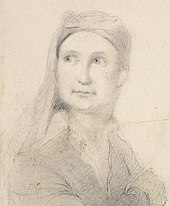
|
| Clarke brothers | 1840/1846–1867 | New South Wales | Hanged | 
|
| George Clarke(alias "The Barber" ) | 1806–1835 | Liverpool Plains in New South Wales | Hanged | |
| Patrick Daley | 1844–? | New South Wales | Imprisoned, died a free man | 
|
| Edward Davis | ?–1841 | Northern New South Wales | Hanged | |
| Jack Donahue | c. 1806–1830 | Sydney area | Shot by police | 
|
| Jack the Rammer(alias of William Roberts) | ?–1834 | South Eastern New South Wales | Shot | |
| John Dunn | 1846–1866 | Western New South Wales | Hanged | 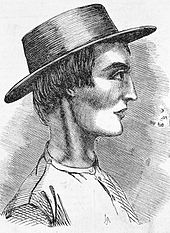
|
| Ralph Entwistle | c. 1805–1830 | New South Wales | Hanged | |
| Joe Flick | c.1865–1889 | Gulf Countryof Queensland | Shot dead byNative Police | |
| John Francis | c. 1825–? | Goldfields region of Victoria | Imprisoned, cause of death unknown | |
| Frank Gardiner | c. 1829–c. 1904 | Western New South Wales | Imprisoned, died a free man | 
|
| John Gilbert | 1842–1865 | Western New South Wales | Shot by police | 
|
| Jimmy Governor | 1875–1901 | New South Wales | Hanged | 
|
| Ben Hall | 1837–1865 | Western New South Wales | Shot by police | 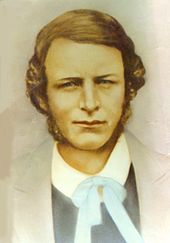
|
| Steve Hart | 1859–1880 | North East Victoria | Possible suicide | 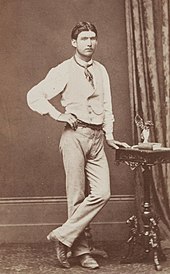
|
| Michael Howe | 1787–1818 | Van Diemen's Land | Shot by police | |
| Thomas Jeffrey | 1791–1826 | Van Diemen's Land | Hanged | 
|
| George Jones | c. 1815–1844 | Van Diemen's Land | Hanged | |
| Lawrence Kavenagh | c. 1805–1846 | Van Diemen's Land | Hanged | 
|
| Dan Kelly | c. 1861–1880 | North East Victoria | Possible suicide | 
|
| Ned Kelly | c. 1854–1880 | North East Victoria | Hanged | 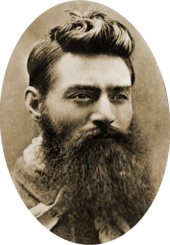
|
| Johnny Campbell | c. 1846–1880 | South East Queensland | Hanged | 
|
| Patrick Kenniff | 1865–1903 | Queensland | Hanged | 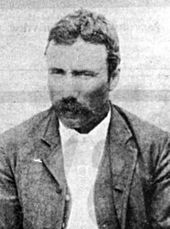
|
| John Kerney | c. 1844–1892 | South Australia | Imprisoned, died a free man | |
| Fred Lowry | 1836–1863 | New South Wales | Shot by police | 
|
| John Lynch | 1813–1842 | New South Wales | Hanged | |
| James McPherson | 1842–1895 | Queensland | Imprisoned, died a free man | 
|
| Moondyne Joe(alias of Joseph Johns) | c. 1828–1900 | Western Australia | Imprisoned, died a free man | 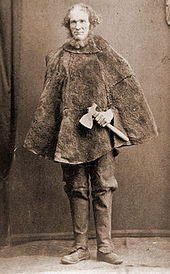
|
| Dan Morgan | c. 1830–1865 | New South Wales | Shot by police | 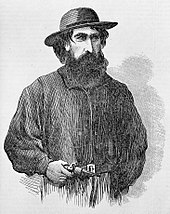
|
| Musquito | c. 1780–1825 | Van Diemen's Land | Hanged | 
|
| James Nesbitt | 1858–1879 | New South Wales | Shot by police | |
| John O'Meally | 1841–1863 | New South Wales | Shot | |
| George Palmer | c. 1846–1869 | Queensland | Hanged | 
|
| Alexander Pearce | 1790–1824 | Van Diemen's Land | Hanged | 
|
| John Peisley | 1834–1862 | New South Wales | Hanged | |
| Sam Poo | ?–1865 | New South Wales | Hanged | |
| Harry Power | 1819–1891 | North East Victoria | Imprisoned, died a free man | 
|
| Rocky(alias of John Whelan) | c. 1805–1855 | Van Diemen's Land | Hanged | |
| Owen Suffolk | 1829–? | Victoria | Shot in prison | |
| John Tennant | 1794–1837 | New South Wales | Hanged | |
| John Vane | 1842–1906 | New South Wales | Imprisoned, died a free man | 
|
| Wild Toby | c. 1840–1883 | Queensland | Shot by police | |
| William Westwood | 1820–1846 | New South Wales Van Diemen's Land |
Hanged | 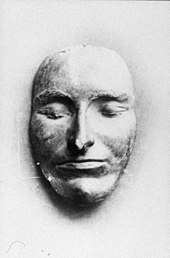
|
References[edit]
- ^Ian Potter Museum collection: BushrangersArchived28 February 2011 at theWayback Machine,u21museums.unimelb.edu.au. Retrieved on 9 January 2011.
- ^Hirst, John Bradley.Freedom on the Fatal Shore.Black Inc., 2008.ISBN9781863952071,pp. 408–409.
- ^abcdeWilson, Jane (14 April 2015)."Bushrangers in the Australian Dictionary of Biography",Australian Dictionary of Biography. Retrieved 14 June 2018.
- ^"Bushranging".The Australian Encyclopedia.Vol. 2 (5th ed.).Australian Geographical Society.1988. pp. 582–587.ISBN1-862760004.
- ^abcdef"Bushrangers of Australia"(PDF).National Museum of Australia.Archived fromthe original(PDF)on 5 September 2007.Retrieved16 April2007.
- ^abBoyce, James (2010).Van Diemen's Land.Black Inc..ISBN9781921825392.pp. 76–82.
- ^"Capture of the Outlaw Clarke and His Brother".Empire (Sydney, NSW: 1850–1875).29 April 1867. p. 5.Retrieved4 August2020.
- ^"Felons Apprehension Act 1865"(PDF).Parliament of New South Wales. 8 April 1865.
- ^Baxter, Carol.Captain Thunderbolt and his Lady: the true story of bushrangers Frederick Ward and Mary Ann Bugg.Crows Nest, New South Wales:Allen & Unwin,2011.ISBN978-1-74237-287-7
- ^"Andrew George Scott (1842–1880)",Australian Dictionary of Biography,Canberra: National Centre of Biography, Australian National University,retrieved24 March2024
- ^"THE EXECUTION OF NED KELLY".West Australian.23 November 1880.Retrieved24 March2024.
- ^ab"The Governor Brothers | State Library of New South Wales".www2.sl.nsw.gov.au.Retrieved29 December2021.
- ^abWalsh, G. P.,"Governor, Jimmy (1875–1901)",Australian Dictionary of Biography,Canberra: National Centre of Biography,Australian National University,retrieved30 December2021
- ^Johnson, Murray (2010). "Australian Bushrangers: Law, Retribution and the Public Imagination". In Robinson, Shirley; Lincoln, Robyn.Crime Over Time: Temporal Perspectives on Crime and Punishment in Australia.Cambridge Scholars Publishing. pp. 1–19.ISBN9781443824569.
- ^"Ned Kelly and the myth of a republic of North-Eastern Victoria".National Library of Australia.Retrieved24 March2024.
- ^"How 'demon bushranger' Michael Howe fought off a 'drunken buffoon' governor and won".ABC News.25 February 2023.Retrieved24 March2024.
- ^"Old Windsor Road and Windsor Road Heritage Precincts".Heritage and conservation register.Roads & Traffic Authority.Archivedfrom the original on 3 September 2007.Retrieved20 April2007.
- ^Graulich, Melody; Tatum, Stephen.Reading the Virginian in the New West.Lincoln, Nebraska:University of Nebraska Press,2003.ISBN0-8032-7104-2
- ^abAustralian film and television chronology: The 1910sArchived29 August 2016 at Wikiwix, Australian Screen. Retrieved 8 October 2015.
- ^Cooper, Ross; Pike, Andrew.Australian Film, 1900–1977: A Guide to Feature Film Production.Oxford University Press,1998.ISBN9780195507843.
- ^Reade, Eric (1970)Australian Silent Films: A Pictorial History of Silent Films from 1896 to 1926.Melbourne: Lansdowne Press, 59. See alsoRoutt, William D. More Australian than Aristotelian:The Australian Bushranger Film, 1904–1914.Senses of Cinema18 (January–February), 2002Archived24 December 2010 at theWayback Machine.The banning of bushranger films in NSW is fictionalised inKathryn Heyman's 2006 novel,Captain Starlight's Apprentice.
